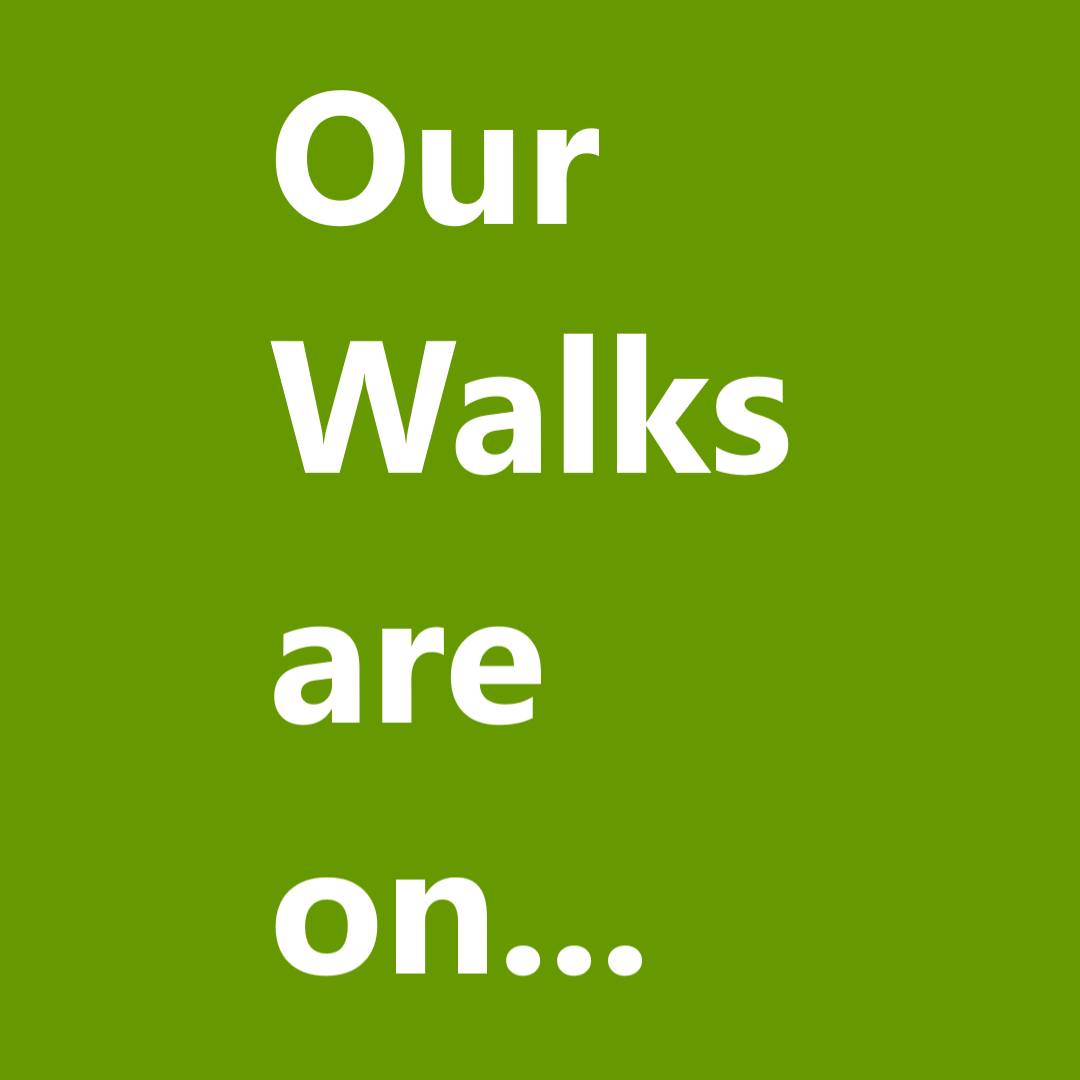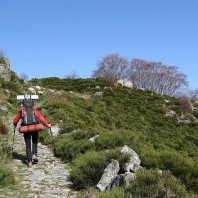Reflections on The Stevenson Trail
It’s taken us 13 hard years of blood, sweat (but no tears) to become The Times recommended tour operator for your Stevenson Trail journey.
A member of The Enlightened Traveller team first walked the 252 kilometres of The Stevenson Trail as part of its 130th anniversary celebrations in 2008. Here are his Reflections on The Stevenson Trail, on what is now considered a classic French trek.
I decided it was easier to fly into Nimes, and make my way north on the Cévenol train, rather than struggle through The Channel Tunnel, Lyon, St Etienne and so on. I was right, but each customer needs to look at their own logistics. Mine gave me the chance to catch a glimpse en route of some of the terrain I was about to walk across, was a sneak preview I really appreciated – despite the sight of the snow-covered Virgin Mary on top of the Notre-Dame-de-Pradelles chapel. Yes, it had snowed overnight at the end of March. Nothing unusual in that, but fortunately the bulk of it had melted by the time I walked into the ‘Granite City’ two days later.
We select the best hotels in each location for our customers and Le Puy is no exception. Nevertheless, other options merit our attention, and so we always like to stay in un-tested hotels where we can on subsequent visits to a town. The overnight stay in just-such-a-hotel in Le Puy was not great, despite having booked into a 2-star national chain for that supposed extra bit of ‘reassurance.’ Like so many of the region’s hotels, it had seen better days and was suffering from underinvestment. The welcome was poor to put it mildly, but was at least consistent with the failure to communicate by email – and I work for a tour operator prepared to give them business for nothing [Following these Reflections on The Stevenson Trail, we no longer use the hotel in question – MD].
The room wasn’t ready until 16.00 hrs; the reversible heating system only worked ‘one way,’ the radiators were cold at 16.30 and breakfast was an after-thought. I wouldn’t be arranging my picnic lunch here, then. Was this symptomatic of Le Puy? I recalled having had my head bitten off the last time I was in town (when walking The Regordane) as a result of asking for a second blanket for my bed; and was shocked to find myself forced to use the table as a plate for my croissant and jam the next morning.
Thankfully, I took the opportunity to check out some alternative accommodation that was above average, and here lies the first reason for booking through a specialised and responsible tour operator – we stay in the same places we send our customers to and continually check out alternatives for their benefit. Nothing is left to chance in order that our walking holidays in France run smoothly and comfortably.
The tried-and-tested taxi and baggage service the next day was first class. Stevenson started his seminal France trek from Le Monastier and our belief in offering authentic experiences rules out making customers walk from Le Puy. Le Monastier’s polychrome abbey is one of Velay’s finest Roman works of art and its contiguous chateau-cum-museum a delight to behold. It houses a permanent Stevenson exhibition that my early start obliged me to forgo – I was in no mood to hang around for the June opening.
Reflections on The Stevenson Trail remind me that the walk to Le Bouchet is challenging, but immensely rewarding. First come the red soils of the volcanic uplands, followed quickly by a sharp rocky incline down to the Upper Loire Valley. Some of our customers actually opt to do the middle section only of Stevenson’s Trail, thus missing out on the memorable descent to Goudet that definitely qualifies it as part of our ‘Best of’ tour.
Stevenson sketched the ruins of the chateau de Beaufort at Goudet; you will delight in snapping it from multiple angles as you commence your climb to your night’s stop-over. Once again, I had chosen to risk-take in order to experience something new; but I hadn’t expected to find a brand new gite d’etape minus bed sheets and bathroom towels. Was I really going to add such items to my barely-sufficient 15- kilogramme luggage allowance? Another night, more Reflections on The Stevenson Trail, another lesson learnt.
The next day’s highlights include the splendid Arquejols viaduct which, like its counterpart at Mirandol to the south, was not around in Stevenson’s time. Built in 1908, the line was closed for economic reasons over a decade ago. Thus this wonder of industrial architecture remains eerily silent and sadly ignorant of the access requirements to France’s interior of the modern-day, back-to-nature, hiking fraternity.
. Lozère, the department that boasts the highest average altitude and the lowest population in France, fears a similar fate awaits its one remaining railway line, Le Cévenol, which would spell the death of the remaining family-run hotels, hard pressed to make ends meet as a result of the region’s glorious isolation. Whilst Stevenson was quick to laud the “sancta Solitudo” of French country life, the heavy toll dealt by WW1 (visible on the many cenotaphs in villages en route) and the subsequent rural exodus, sees the remaining locals worried sick about losing their main life-line to modern France due to narrow economic rationality.
My reflections on The Stevenson Trail remind me that Stevenson had other concerns to contend with when he was hiking in France: his own personal health problems, a departed lover and The French Wars of Religion. My preoccupations were much more profane: ensuring there had been no alterations to the route since my colleagues last walked it; taking photos for our website; and the gentle nursing of a nascent blister using a Compeed compound apparently not available in North America.
Stevenson slept out rough for the first time, and in inclement weather, at a place called Fouzillac, just north of Cheylard L’Eveque. Like our customers before me, I fared rather better, and chose to check out some alternative accommodation in Chaudeyrac. The day’s walking hadn’t been that good and rain had somewhat dampened my enthusiasm.
The advertised one-and-a-half kilometre detour seemed more like four, but it was worth it: a warm welcome, great food and all mod cons. Other hoteliers could learn a few things from this proprietor, who has heavily invested in his business and, besides running the hotel, sells cepes mushrooms worldwide, raises wild boars and still has time to moan at his teenage daughter’s reluctance to do her half-an-hour’s homework in the evening – unfortunately in earshot of everyone in the hotel but, as a father of two small but headstrong girls, it was rather like relating to my own future.
Further Reflections on The Stevenson Trail take me to The Cevennes Journal, where Stevenson wrote: “Why any one should desire to visit either Luc or Cheylard is more than my much-inventing spirit can suppose.” One hundred and thirty years later, and with even less of Luc castle remaining, I have to agree with him. The February snow storms had taken a heavy toll on some of the Gardille forest’s pine trees, many of which lay savagely snapped in two under the sheer weight of the deluge. Yet, as with life in general, perhaps it’s the dull forestry trails that make us appreciate more the splendour of walking the crest of the hill. And many are determined to walk the walk, come what may.
As a Presbytarian married to a French Catholic, I decided to give the trappist monastery at Notre-Dames-des-Neiges a wide berth, fearing imminent conversion, stomach upset (they brew some renowned liquor) and foot swelling from the extra distance. I settled for the night in my comfortable hotel in La Bastide and looked forward to better things. I was not disappointed. Whilst the next day’s walking to Le Bleymard had its high spots, it was the following day, and the day after that, Day Seven, that will live long in the memory of my Reflections on The Stevenson Trail.
The six-hundred-metre climb up Mont Lozere is challenging to say the least, but it wasn’t enough to make me camp out on the north side and light up a cigarette as Stevenson had done one late September evening.
At a watering hole by the ski centre, I met a modern-day shepherd, whose job it was to rent out donkeys to inexperienced and unsuspecting tourists. He was awaiting a visit from some Spanish journalists and delighted in telling me that following week he was expecting the English Press – although he couldn’t remember the name of their paper. Donkeys were great companions, apparently, and quite cheap to run as well; but woe betide he who tries to dominate them. You have to negotiate, he said. Not having the time to explore the niceties of donkey diplomacy, I bade him farewell and continued on my way.
Snow still covered parts of Le Pic de Finiels which, at 1699 ms, is the highest point of the trail and of Lozere itself. From my Reflections on The Stevenson Trail, the general appearance of the summit, in all its lunar splendour, provides a field day for 1969 space conspiracy theorists. Even the most ardent of NASA apologists would run for cover if asked as to whether it was all simply filmed here.
The ‘chaleur’ of the Catholic welcome in Le Bleymard was in stark contrast to the ‘salutations Cévenoles’ proffered in Protestant Le Pont de Montvert – and they don’t put the draught lager on until June; so when the TV imploded in the packed Bar du Commerce at half time during the Barça – Man Utd Champions’ League semi-final, there seemed nothing much else to do than retire and administer more Compeed.
I met my second brace of French geography and history teachers early the next day. Critical of President Sarkozy’s recent flirtations with the Jet Set (as if that had altered their opinions of him!) they failed to see how fortunate they were at being sponsored by the Private Sector to walk for four days in a lunar orbit around Florac. Yet the fact they were camping seemed to suggest the sponsorship was insufficient to combat the rising costs of living within the Euro-zone.
The southward climb up and out of Le Pont de Montvert, and onto the Cham de l’Hermet, was scenic indeed; and the walk along the ‘ligne des crêtes’ that afternoon was a real joy that I must repeat. The trail winds its way westwards, slipping over the ridge from the north face to south side, as you enjoy the delightful juxtaposition of sunkissed and broomy Mediterranean flora one moment, followed by lush, alpine vegetation the next.
As we approached the final leg of Day Seven, the smart teachers disappeared down the GR 68 to Florac, whilst I was duty bound to see it through on the newly-elongated GR 70. I had a bad feeling about it and the experience confirmed my fears. It’s one thing being true to history, but when the tourist board re-writes the ending, which should have been a big finish, maybe it’s justified to take the shorter, and more scenic, conclusion to a memorable day.
From my Reflections on The Stevenson Trail after Florac, the remainder of the trail is somewhat disappointing in places. Once again, too much emphasis is placed on forestry trails and insufficient attention to more interesting alternatives – after all, unlike some genuine historic trails, such as the nearby Regordane Way, in most cases we do not really know the precise path Stevenson took.
Nevertheless, the path alongside the Mimente River that follows the trail of the former Ales to Florac railway line is a real delight; and the steepish descent from Col de Saint-Pierre in Lozere to The Gardon River is most enjoyable – dipping one’s feet is optional, but highly recommended.
Perhaps I was just getting a bit weary of walking on my own by the end, or maybe the trek justifies more than the nine days I gave it. Cassagnas, a Camisard stronghold, deserved more time, and I thoroughly enjoyed my night in an unclassified inn at Saint–Germain-de-Calberte, where the Catholic landlord’s son welcomed me with a handshake that would have made the most ardent of Huguenots feel at home. Sadly, the bathrooms failed to live up to the same billing, so it is not possible to use this inn until they upgrade.
When I finally reached St Jean du Gard ahead, I was looking forward to eating a simple pizza, after my fill of ‘produits du terroir’, and to showing my girls some photos of where dad had been for the last ten days.
Since publishing these Reflections on The Stevenson Trail, the Trail itself has is now considered by France hiking enthusiasts as one of the top ten walking holidays in France. Graded as a moderate physical challenge, the trip is available from the mid-April to mid-October.
Independent testimonials about walking the Stevenson Way with The Enlightened Traveller can be read here:Click to visit The Stevenson Trail tour page.
© The Enlightened Traveller 2021
![]()

 Click to visit The French Hiker’s Guide to Holidaying in the Hexagon and France self-guided walking, trips, trails, places & themes.
Click to visit The French Hiker’s Guide to Holidaying in the Hexagon and France self-guided walking, trips, trails, places & themes.
